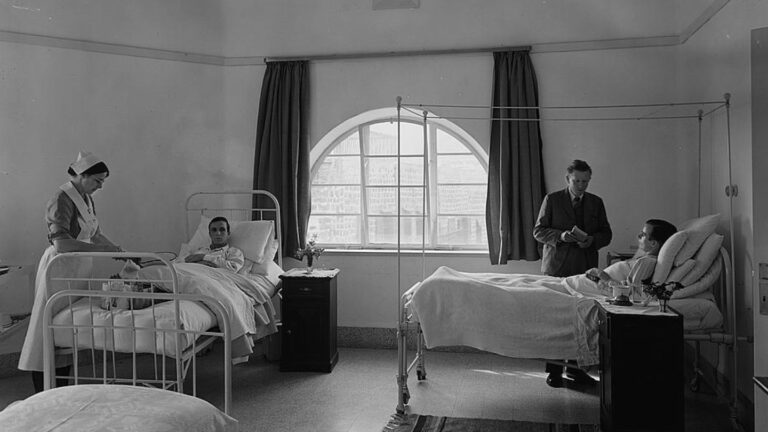Old tin toys. Tnuva cottage cheese containers repurposed as cactus planters. Hoopoe birds. Paper-wrapped Elite “cow” chocolate bars.
For artist Yoel Gilinsky, the early days of the State of Israel are distilled into symbolic objects that represent national history and his personal history as well.
In a recently published memoir, Sefer Ga’agu’im (Book of Longings), Gilinsky offers readers a glimpse into his Jerusalem childhood of the 1950s and ‘60s.
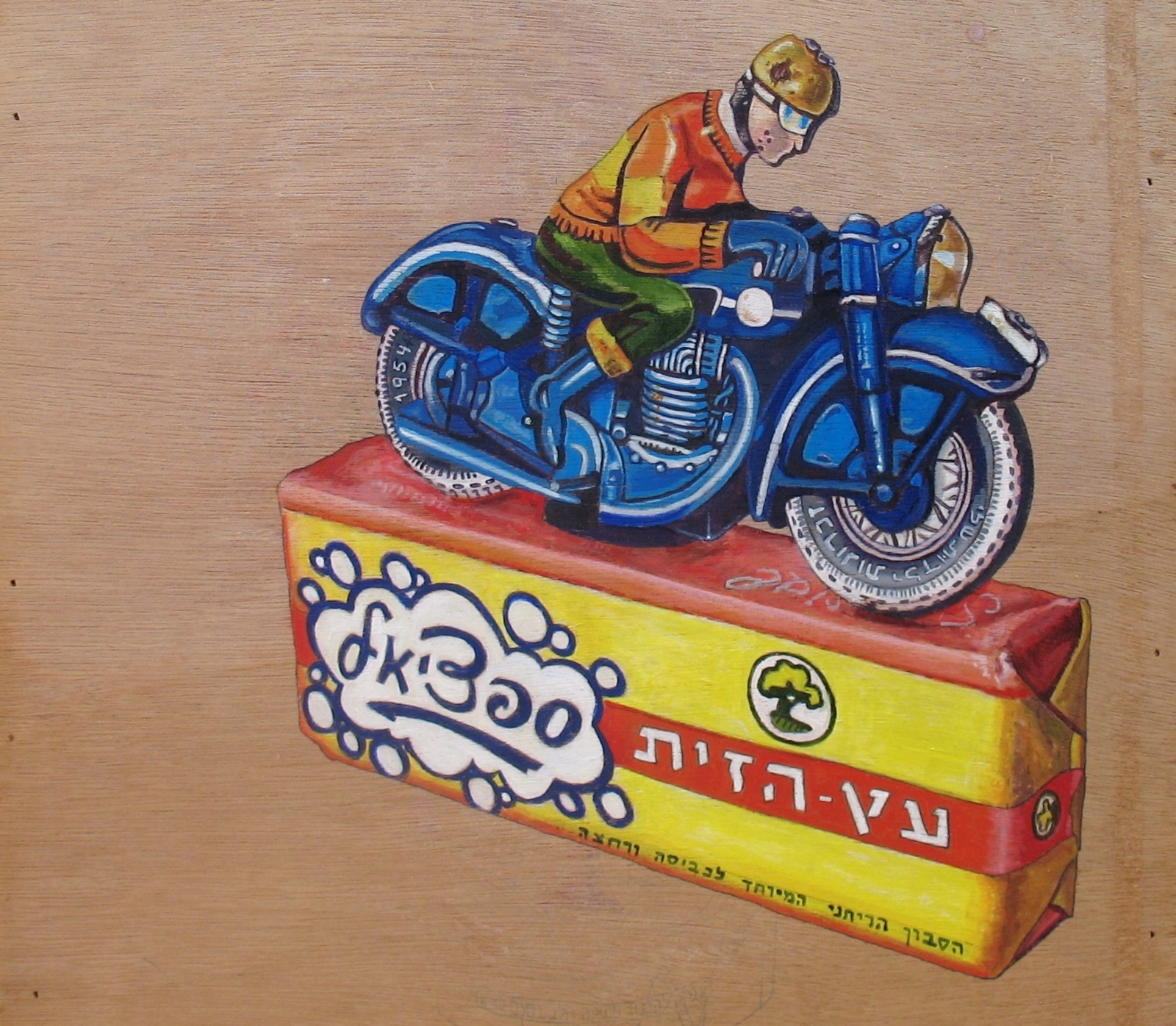
Written in Hebrew with smatterings of the Ladino (Judeo-Spanish) spoken by the older generation of Gilinsky’s youth, the book’s short stories – 96 in all –describe the events, people and places that inspired his paintings of objects.
These items hold personal meaning for Gilinsky but also resonate with Israelis who identify with them a particular time and place.
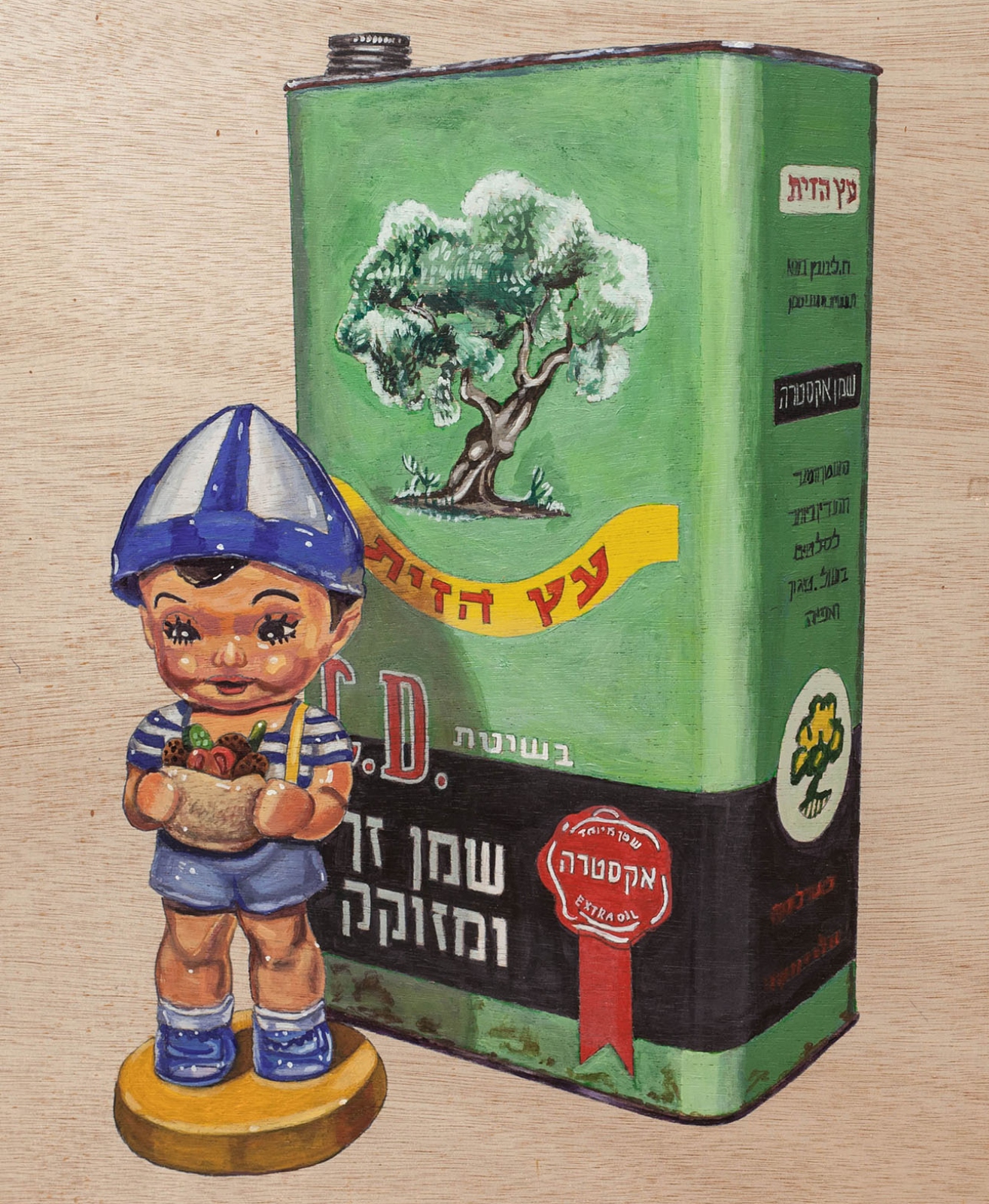
In his early works, Gilinsky dealt with the spiritual realm and Jewish mysticism. Following a personal crisis, he shifted his focus to personal memories reflecting the warmth and innocence of his Jerusalem childhood, expressed through the presentation of Israeli nostalgic artifacts.
These objects often hold a double meaning. For example, his recurring motif of cacti growing in tin-can planters is heavily symbolic for any Israeli “sabra” – the moniker bestowed on every native-born Israeli.
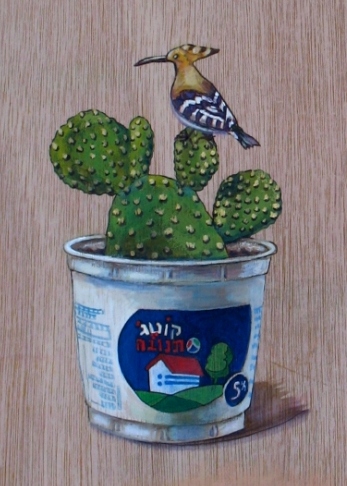
In some cases, Gilinsky adds the Israeli national bird, the hoopoe, for good measure.
Plastic squeaky hammers – here arranged as a bouquet in a tin candy box– are immediately recognized by every Israeli as the unofficial symbol of Israel Independence Day, back when every child was given license to bop the head of anyone they might meet. Friends, neighbors, strangers – all targets were fair game.
It’s also worth noting that the sweets tin is branded “Shekem”, the retail store chain serving IDF personnel.
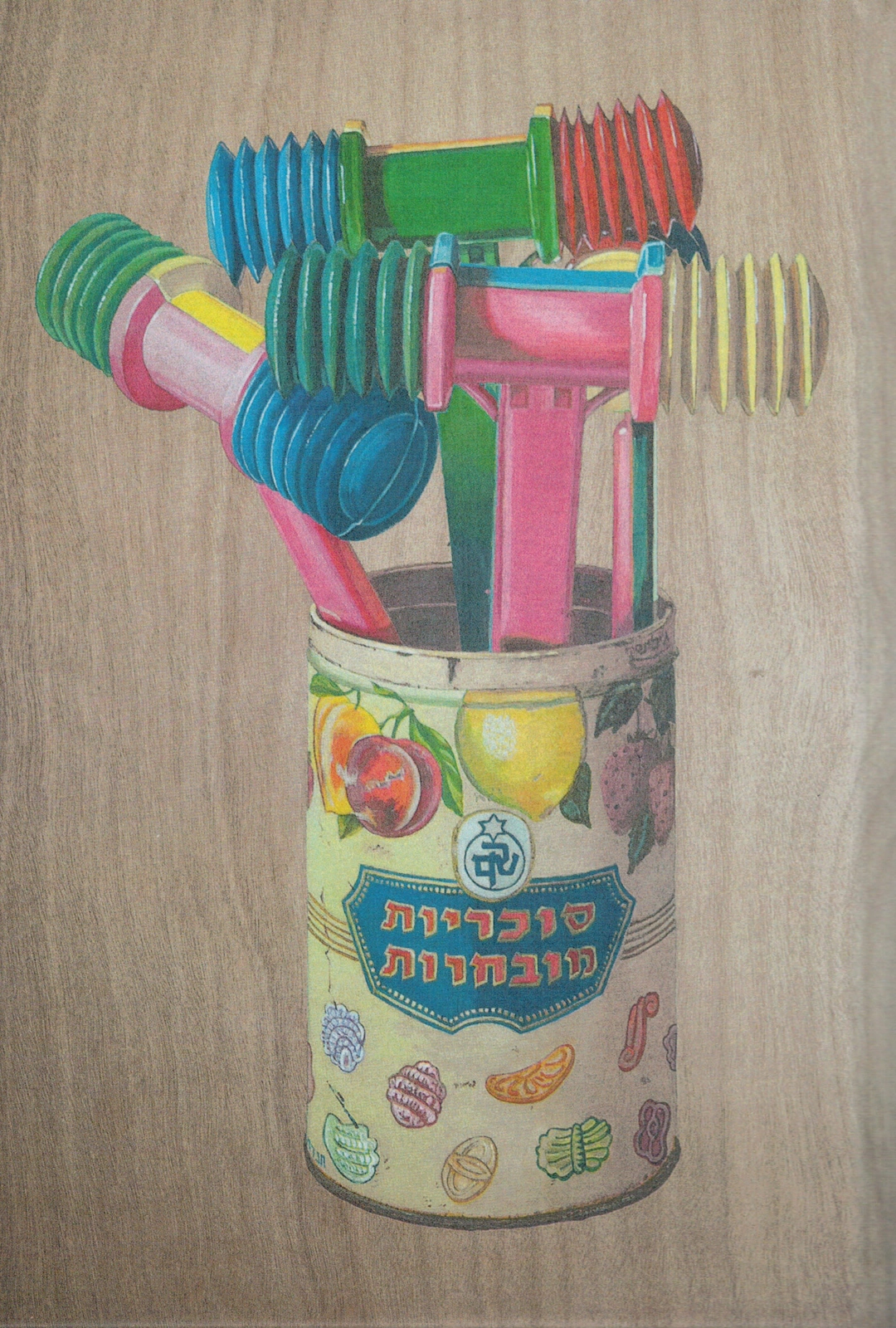
In addition to such ironies, Gilinsky gives his works playful titles. These are often puns that, sadly, don’t translate well into English.
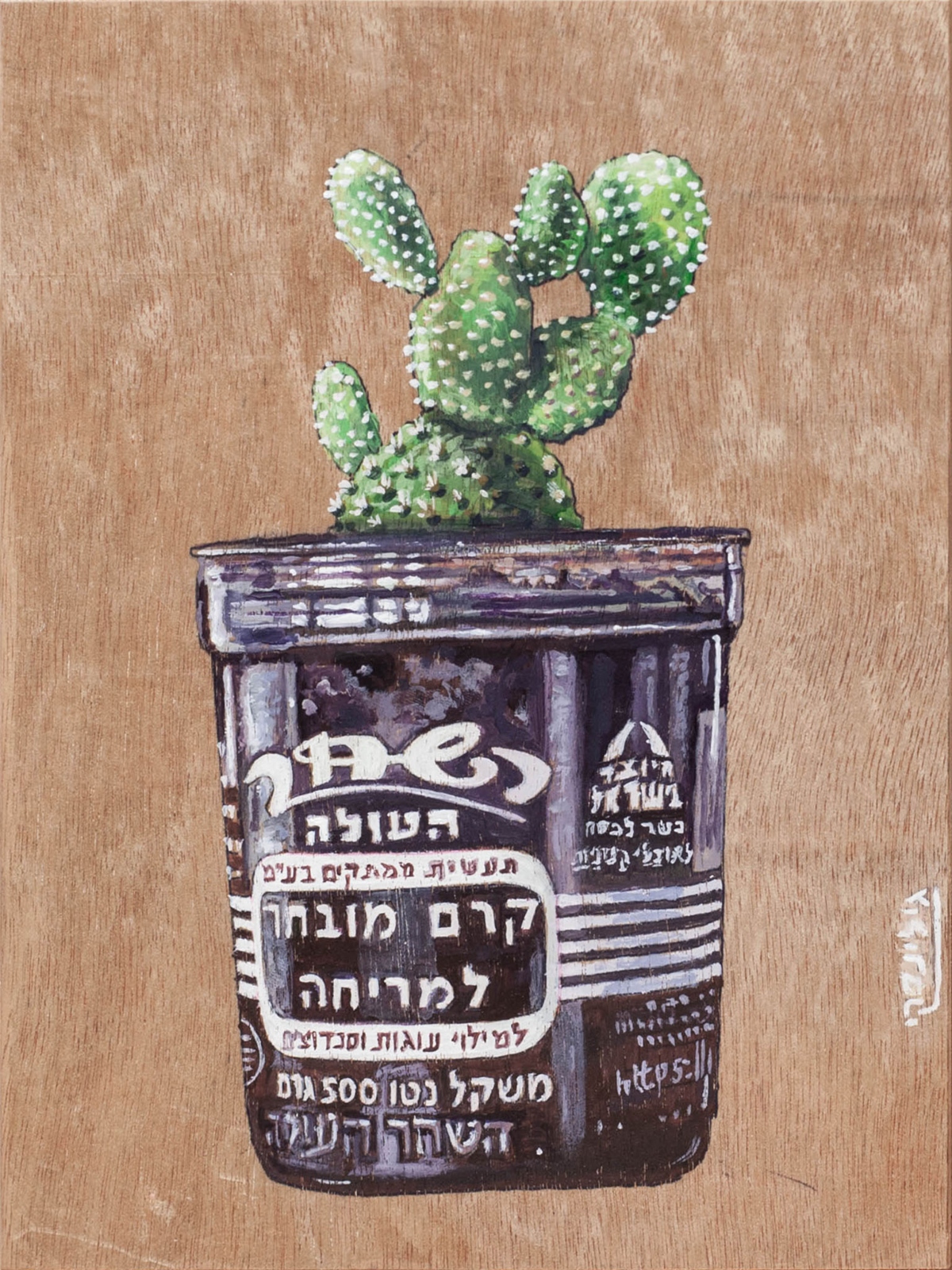
For example, a picture featuring the chocolate spread manufactured by the HaShachar HaOleh company (“Rising Dawn” in Hebrew) — a typical Israeli kiddie breakfast when spread on a fresh soft white bread roll — is entitled “Dawn Rises Over Israel.”
Personal childhood objects are crammed in a drawer with seminal Zionist/Israeli/Jewish images, like JNF coin boxes, Hanukkah candles and Purim noisemakers, together with a picture of Theodore Herzl, a Russian matryoshka nesting doll, a wooden top, cans of Elite coffee powder and Etz HaZayit olive oil, plus – most tellingly – a can of loof, the tinned meat “loaf” that was once the staple food for every soldier.
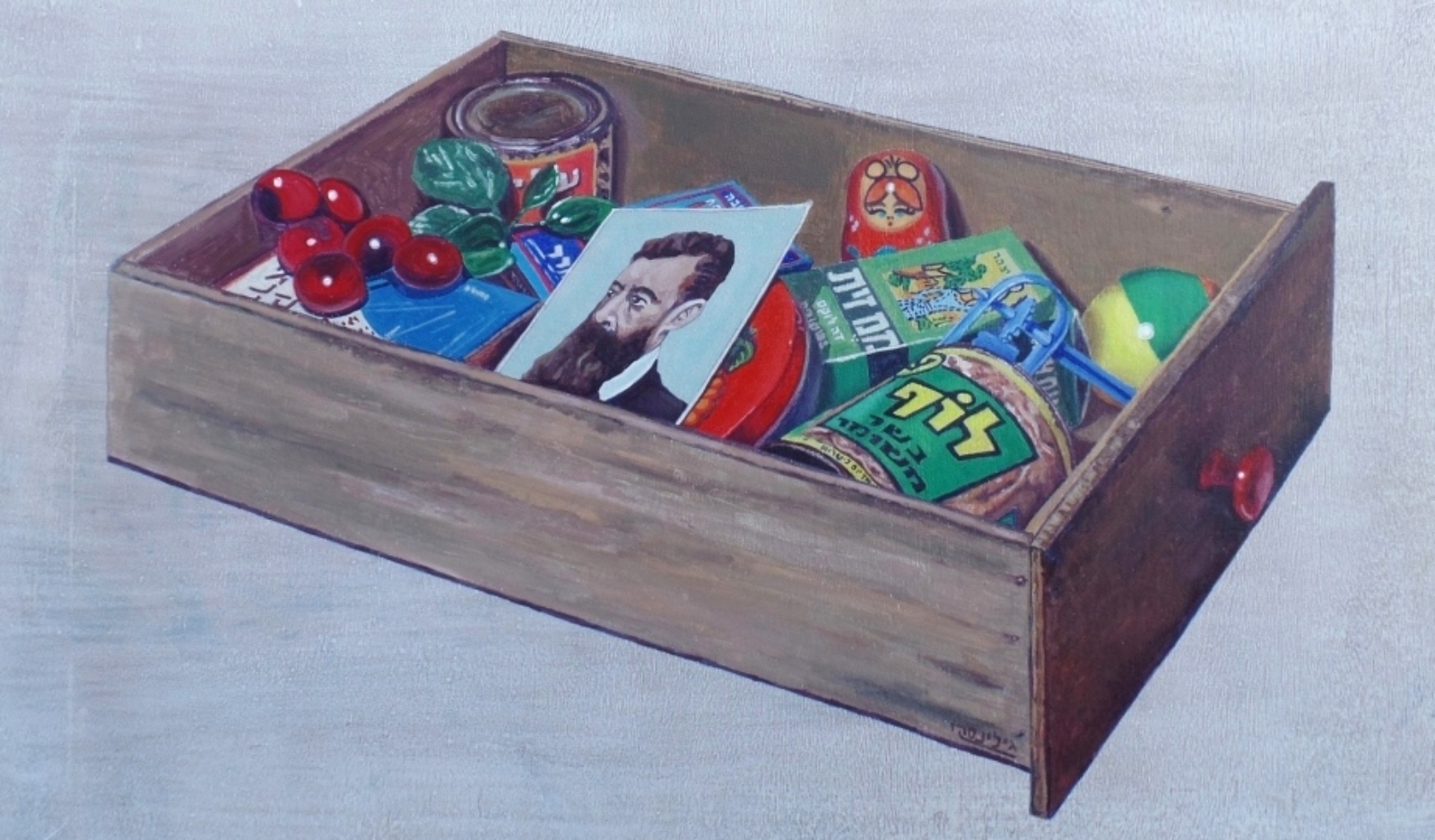
Born in Jerusalem in 1954, Gilinsky is a former lecturer at the Bezalel Academy of Art and Design in Jerusalem. His works have been exhibited, among other places, at the Israel Museum, the Haifa Museum of Art, and various gallery shows.
More of Gilinsky’s work can be viewed on his Instagram and Facebook pages.
The book, Sefer Ga’agu’im (in Hebrew), is available in select bookstores and at the Nahum Gutman Museum of Art in Tel Aviv.




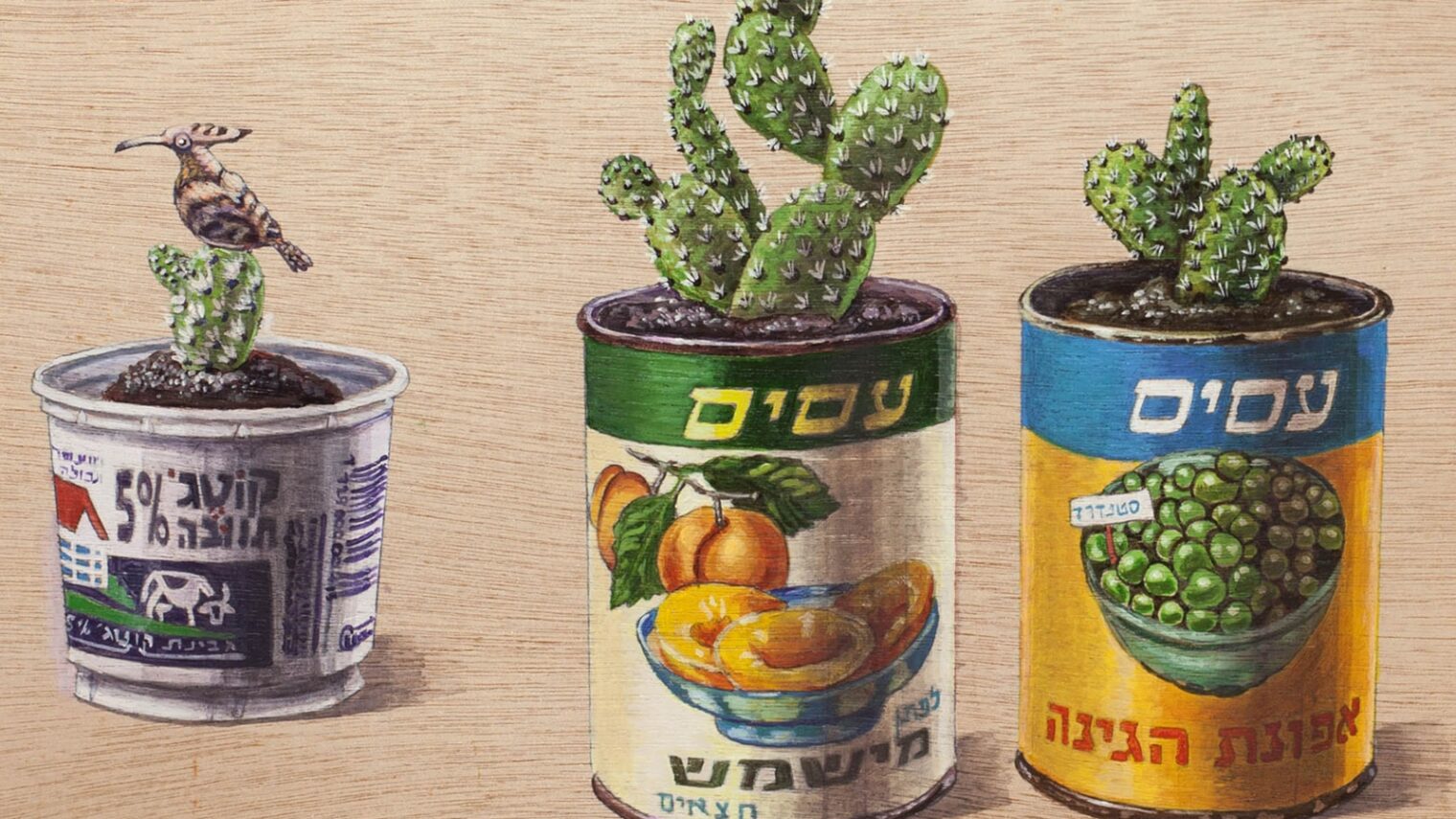










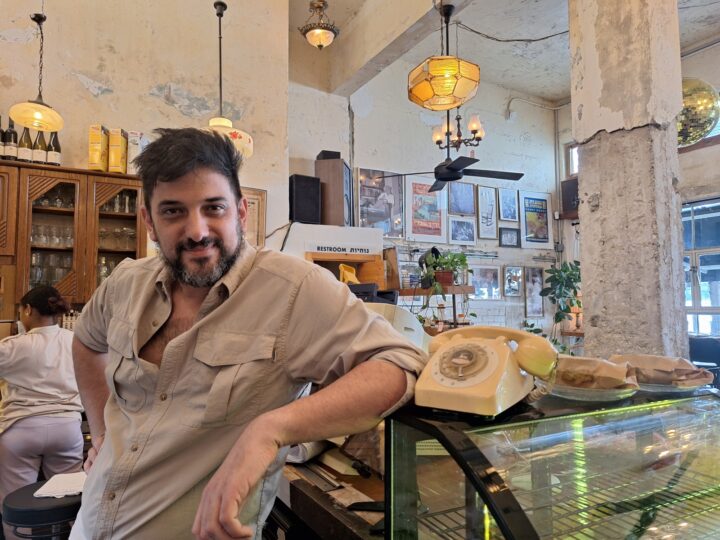
![Elections 1977 – Likud posters] In 1977, Menahem Begin led an election upset as Israel’s first non-Labor prime minister. Credit: GPO Elections 1977 – Likud posters] In 1977, Menahem Begin led an election upset as Israel’s first non-Labor prime minister. Credit: GPO](https://static.israel21c.org/www/uploads/2019/09/Elections_1977___Likud_posters_-_GPO-768x432.jpg)
